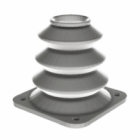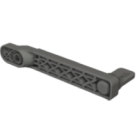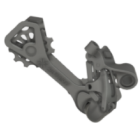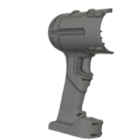3D printing basics explained
New to 3D printing? This section introduces the 3D printing basics — the fundamental concepts that form the foundation of additive manufacturing. From understanding how different technologies operate to learning the core workflow steps like 3D modeling, slicing, and layer-by-layer printing, we break it down in simple, accessible terms. Whether you’re wondering how printers create physical objects from digital files, or what makes one technology different from another, these FAQs are the perfect place to begin your journey into 3D printing basics.
3D printing is called additive manufacturing because it builds objects layer by layer, adding material only where it’s needed. This contrasts with traditional subtractive methods, like CNC machining, which cut away from a solid block to create a part. Additive processes result in less material waste, more design freedom, and the ability to create complex internal geometries that would be impossible using conventional methods. The term reflects both the process and its advantages.
3D printing was invented in 1983 by Chuck Hull, who developed the first technology known as stereolithography (SLA). He patented the process in 1986 and founded 3D Systems, one of the first 3D printing companies. This innovation marked the beginning of additive manufacturing, allowing objects to be created layer by layer from digital models. Since then, the field has evolved to include various technologies like FDM, SLS, and DLP. Today, 3D printing is widely used across industries such as automotive, aerospace, medical, and consumer products.
The first 3D printer was invented by Chuck Hull in 1983, who developed the process of stereolithography (SLA). He patented the technology in 1986 and co-founded 3D Systems, which commercialized the first 3D printing systems. Chuck Hull is widely recognized as the father of 3D printing. His invention laid the groundwork for the diverse range of additive manufacturing technologies used today.
3D printing, or additive manufacturing, builds objects layer by layer from digital files, in contrast to subtractive methods that cut material away. It offers unmatched design flexibility and enables rapid iteration without molds or tooling.
A 3D-printed object is one that has been made directly from a digital model using an additive process. It implies that the item was created without traditional molds, often with minimal material waste, and likely features complex geometries or custom details.
3D printing can be used for prototyping, tooling, spare parts, product development, medical devices, and even end-use components. It supports industries like aerospace, automotive, architecture, and consumer goods. Because of its flexibility, it’s also ideal for short-run manufacturing and complex custom geometries.
A slicer software converts the digital design into layers, generating G-code instructions for the printer. The printer then builds the object layer by layer, using materials like filament, resin, or powder.
It starts with designing a 3D model in CAD software, which is then sliced into layers using specialized software. The printer follows those instructions to build the object, layer by layer, using materials like plastic filament, resin, or powder. Post-processing may follow, including cleaning or curing.
Some printers can run from USB drives or SD cards once the file is sliced, but you’ll still need a computer to prepare and slice the model beforehand. Fully computer-free workflows aren’t standard yet.
It’s easier than ever to start, especially with user-friendly printers and software. That said, mastering design, material settings, and troubleshooting takes some learning — like any other skill.
Unlike traditional methods that limit designs based on tooling constraints, 3D printing allows form to lead function. This design-first approach fosters innovation and faster product development.
3D printing enables rapid prototyping, design freedom, and cost-effective short-run production. It reduces waste by using only the required material and allows for quick iteration, especially valuable in product development and engineering.
The time required to 3D print a part depends on several factors, including the size of the object, level of detail, chosen layer height, and the type of 3D printing technology. Small, low-detail models can be printed in under an hour, while larger or highly detailed parts may take several hours or even more than a day. FDM printers tend to be slower for detailed prints but efficient for basic shapes, whereas SLS and SLA can produce complex geometries faster, especially in batch production. Layer thickness also plays a key role — thinner layers improve quality but significantly increase print time. Planning ahead with optimized settings and realistic expectations is essential for managing production schedules.
In general, 3D printing can take anywhere from 30 minutes to over 24 hours, depending on the size, complexity, layer height, and printing technology used.
Yes, a computer is typically required to prepare and slice your model before printing. You’ll need it to run CAD or slicing software, adjust print settings, and transfer the G-code file to your printer. Some modern printers allow Wi-Fi or USB printing, but the initial setup still requires a computer.
SLS printing typically offers a resolution of around 100 microns, with feature detail down to 0.5 mm. Dimensional accuracy is usually within ±0.2 mm, depending on part size and geometry. It’s precise enough for functional prototypes and many end-use parts.
Explore also
- Choosing the right 3D printing technology
- 3D printing materials guide
- Software & tools for 3D printing
- Costs, time & practical considerations
- 3D printing market & capabilities
Related categories













